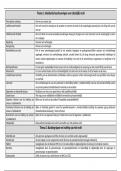Summary
Summary AQA Psychology: situational variables
This document provides detailed A01 notes and A03 evaluation into situational variables of the social influence module, these notes are clear, and easy to follow. The A03 contains a deep explanation of both strengths and limitations to the theory/study, along with evidential support or criticism. ...
[Show more]








